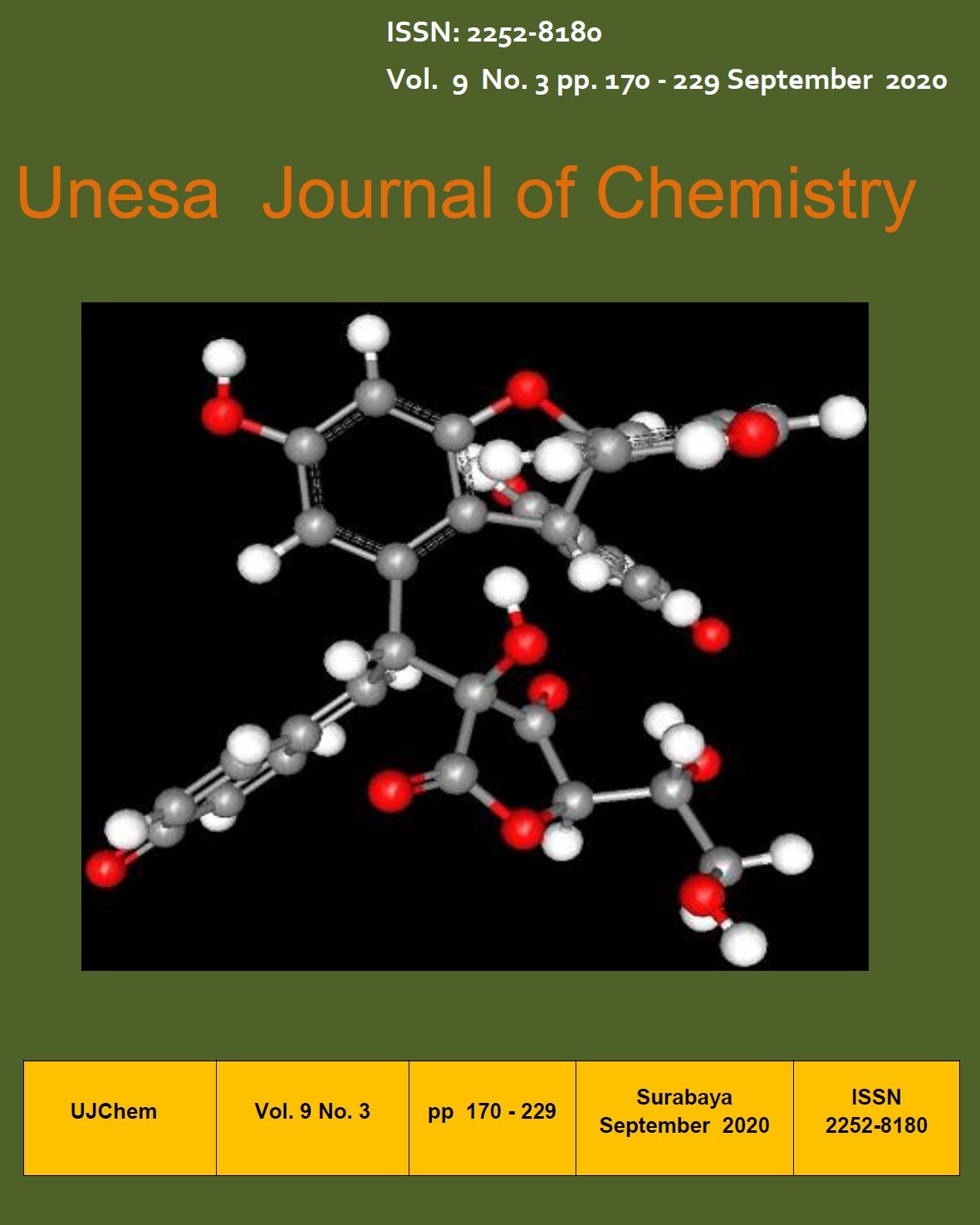PENGARUH JUMLAH CROSSLINKER TERHADAP PERSEN EKSTRAKSI PADA SINTESIS MOLECULARLY IMPRINTED POLYMER SEBAGAI ADSORBEN UNTUK KLORAMFENIKOL THE EFFECT OF CROSSLINKER AMOUNT TO THE PERCENT EXTRACTION IN MOLECULARLY IMPRINTED POLYMER SYNTHESIS AS AN ADSORBEN
Main Article Content
Downloads
Download data is not yet available.
Article Details
How to Cite
Asni, N. K., & Sianita, M. M. (2020). PENGARUH JUMLAH CROSSLINKER TERHADAP PERSEN EKSTRAKSI PADA SINTESIS MOLECULARLY IMPRINTED POLYMER SEBAGAI ADSORBEN UNTUK KLORAMFENIKOL THE EFFECT OF CROSSLINKER AMOUNT TO THE PERCENT EXTRACTION IN MOLECULARLY IMPRINTED POLYMER SYNTHESIS AS AN ADSORBEN. Unesa Journal of Chemistry, 9(3), 179–188. https://doi.org/10.26740/ujc.v9n3.p179-188
Issue
Section
Articles

